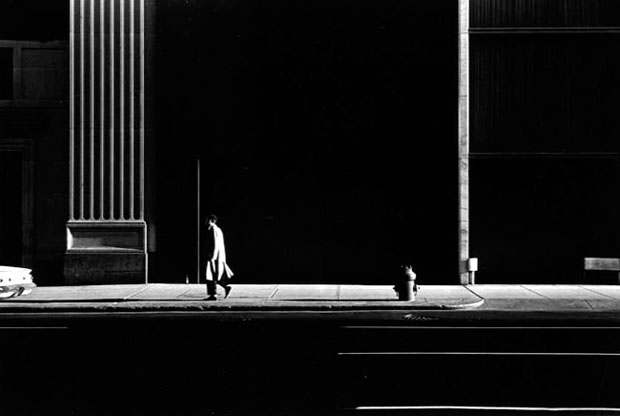Contents
Light Quality
Direct light or hard light – the rays of light are nearly parallel and strike the subject from one direction creating hard edged dark shadows with little detail.
Examples: a spotlight, sun on a clear day, or a bare flash
Diffused light or soft light– the rays of light are scattered and coming from many directions. It appears even and produces indistinct shadows. Examples: overcast daylight, a light covered with tracing paper or other translucent material.
Direct Light and Direction
Front light comes from in front of subject from the camera position and the shadows fall behind the subject not concealing any details.
Side Light comes from 90 degrees to the camera. it adds dimension and texture to the subject.
Backlight comes from behind the subject towards the camera.

Photographer: Manual Alvarez Bravo

Photographer: Ray Metzker

Photographer: Ray Metzker
Terms to know for introduction to studio photography using strobe lights
Ambient Light-The light that is already there sometimes called available light
Continuous Lights-Always on, may be incandescent, halogen, fluorescent, LED
Strobe Lights – lights that fire when the exposure is made
Strobes have two bulbs:
- the modeling light which helps you see where the light will fall
- the flash bulb that fires when you press the shutter release
A trigger on the camera uses radio waves to tell the receiver to fire the light. The power pack stores the power used to make the exposure. Light meter is used to give proper exposure. Main light is set up first producing sense of direction of light and defining texture Fill light is light that is used to lighten shadows. It can be a light or a reflective surface.
Modifiers
In studio photography, we put modifiers on the flash heads to change the quality of the lights. Two basic categories of modifiers are:
- Softboxes- these spread and diffuse the light. The light hits the subject from many directions making the shadows softer.
- Grids – these concentrate and focus the light. The light hits the subject from one direction making the light harsher and the shadows sharper.




Leave a Reply